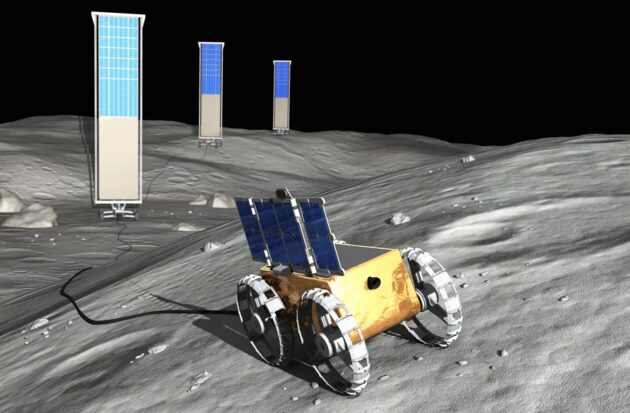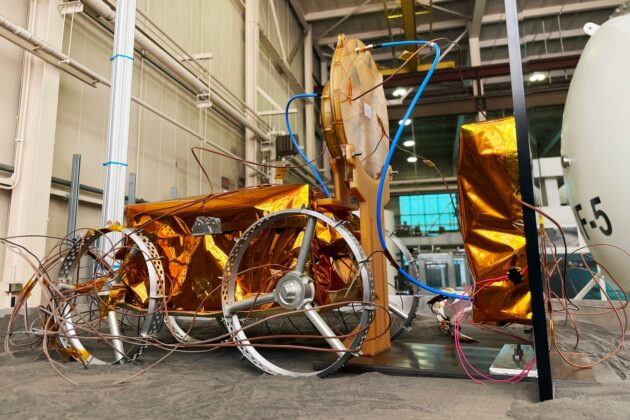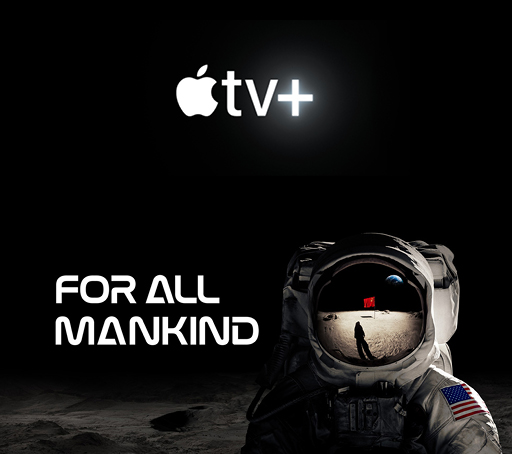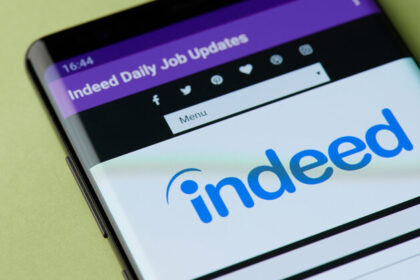Astrobotic says it has completed flight model acceptance testing for a wireless charging system that incorporates technology from Seattle-based WiBotic — and that could help rovers roam across the surface of the moon.
The system is designed to provide reliable, high-efficiency power transfer amid the extreme conditions of the lunar surface, including a night that lasts 14 Earth days. It was developed by Pittsburgh-based Astrobotic and WiBotic with assistance from the University of Washington, Bosch and NASA’s Glenn Research Center.
“This is the foundation for a unified, interoperable power standard for the moon and Mars,” Astrobotic CEO John Thornton said in a news release. “We’re offering a wireless charging solution that can support cross-agency, cross-industry missions, built to survive the harshest planetary environments. If your assets need dependable power on the surface, this is the plug they’ll need.”
WiBotic’s co-founder and CEO, Ben Waters, said the system’s successful qualification is a “major step forward.”
“For the first time, there’s an off-the-shelf, space-qualified wireless charging solution available for lunar and orbital missions,” Waters said in a LinkedIn post. “Instead of spending years developing a custom charger for each robot, tool or power system, companies can now integrate a proven solution that works across battery types, voltages and devices — no physical connectors required.”

The wireless system is designed to deliver power from an Astrobotic lunar lander or from a Vertical Solar Array Technology platform, also known as VSAT. Power from the source would be converted to wireless power by a WiBotic transmitter circuit, and then sent to the device by a transmitter antenna coil.
Such a system would be well-suited for lunar operations — where devices would otherwise have to be repeatedly connected and disconnected, subjecting them to wear and tear from abrasive moon dust.
The acceptance testing process for the wireless charger flight model was conducted over the course of four months at Astrobotic’s Pittsburgh headquarters and at Glenn Research Center in Cleveland. The model was tested to check for electromagnetic interference and for the ability to cope with the vibrations that would be experienced during launch. The system also was subjected to vacuum conditions and the cold, dirty environment that would be encountered on the lunar surface.
Development of the system was supported by a NASA Tipping Point contract. A 125-watt wireless charger model is now commercially available for advanced power solutions in space applications, and a 400-watt model is undergoing further testing.
Read the full article here










